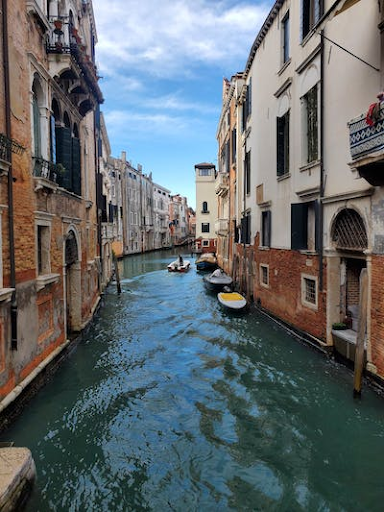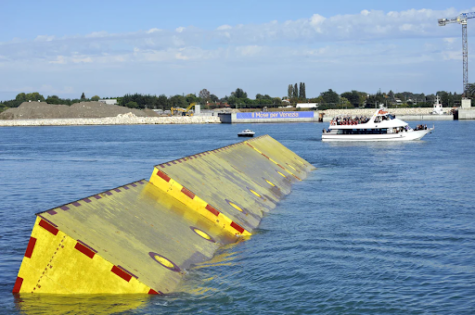Venice Is In Trouble

(Photo Source: Pexels)
December 15, 2022
Venice sits on an island inside of a lagoon that is placed on the outskirts of the Adriatic Sea, a large body of water that is connected to the Mediterranean. When Venice, once known as the Venetian Empire, officially became a city in the 5th century, it had a significant geographical advantage. Surrounded by water on all sides, the city had protection from all outside powers. Venice also had the power all throughout the Mediterranean Sea, practically controlling all trade that took place there.
Nowadays, Venice is a relatively successful city. It is now a part of the country Italy, rather than being its own empire, and it is one of the most visited cities in the world. However, the city is facing a huge problem; it’s drowning.
Now Venice has become, geographically, one of the worst-placed cities in the world. The lagoon that Venice resides in is at the end of the long and narrow Adriatic Sea, causing the natural flow of the waves to directly enter the lagoon, creating a higher level of water in the lagoon than that of the sea around it. This makes the already flood-vulnerable island even more at risk to experience one.
To make matters worse, Venice is slowly losing elevation due to the Adriatic Plate shifting Northeast towards Italy. This means that the area that is already prone to flooding is slowly sinking into the Earth at a rate of about 1 to 2 millimeters per year.
On top of all this, the global sea level is rising about 3.5 millimeters every year due to climate change. American Climatologist Michael E. Mann worded the situation perfectly, “Venice faces a perfect storm of natural geological subsidence (sinking) and sea level rise from human-caused planetary warming.”
The frequency of flooding in Venice has been on a steady increase in the past several years.
In fact, in November 2019, the mayor of Venice, Luigi Brugnaro, declared a state of emergency due to a severe flood the city experienced. He spoke out and said, “Venice is on its knees.”
What Is Venice Doing?
The leaders of Venice have been aware of the flooding problem the city faces for many years. Almost two decades ago, an idea that could save the city was brought to life, called MOSE.
Modulo Sperimentale Elettromeccanico, or MOSE for short, is a project that will prevent flooding in the Venetian Lagoon, hopefully saving Venice. MOSE consists of 78 gates spread across the three inlets, the areas where the lagoon meets the Adriatic Sea.
During normal or low tidal conditions, these gates will be full of water and rest on the seafloor. But as soon as high tide nears, the gates will be drained of water, rapidly be filled up with compressed air, and shoot up to the surface, defending the lagoon from any troubles. Once the high tide is over, the gates will again be filled up with water, and sink down to the floor of the sea.

The project, however, has been a very controversial topic for residents of Venice. When the idea was initially proposed, MOSE was supposed to be completed in 10 years, and the total cost was 4.2 billion euros. Construction began in 2003, and the most recent update is that the project will be completed in December 2023, according to MOSE commissioner Elisabetta Spitz. The original cost is also nearly doubled, with a hefty price of 8 billion euros, according to CNN Travel.
Additionally, the project is estimated to cost a whopping 328,000 euros each time it is raised. However, the money seems to be getting put to use, because MOSE has had several successful test runs in the past few years.
MOSE is still a work in progress. Several signs point to the project heading in the right direction, but for now, Venice will have to hold strong through the floods that will continue to happen.











Jessica Brann • Dec 20, 2022 at 10:57 am
I’ve never traveled to Italy, but Venice looks beautiful. I hope the flood challenge can be fixed, it is such a unique place.
Thomas Sunkenberg • Dec 20, 2022 at 10:53 am
This is insane. I wonder is MOSE will help reduce the effects on rising sea levels in the future. It would be a shame if Venice began to flood to uncontrollable levels. There is so much history and beauty in that city.